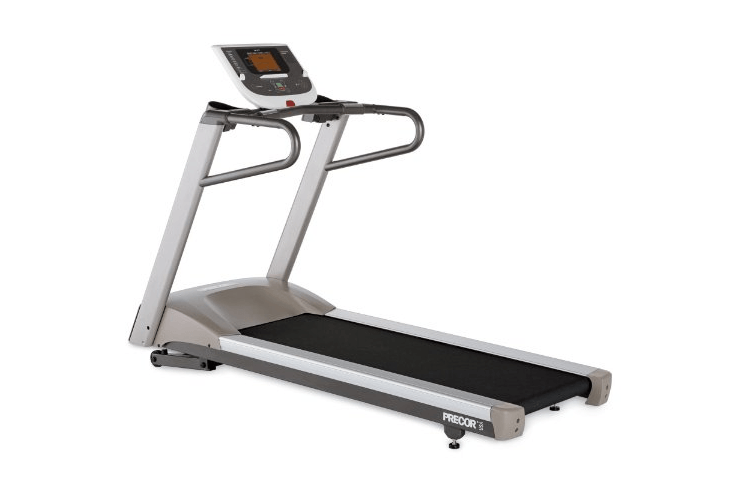It’s true that women are more susceptible to certain types of injury and illness when running, but all that means is that you ladies have to stay in tune with their body; taking certain preventative measures to halt injuries before they occur, and watching out for the early warning signs of trouble.
This article will focus on the following 5 issues that can afflict female runners:
1. Breast Support
2. Feet
3. Hip to Ankle Line (and Knees)
4. Irregular period
5. Thyroid Function
1. Breast Support
Proper breast support is an issue that afflicts women of all shapes and sizes. It’s uncomfortable for the majority of women to run without one, but “bra burn” can happen even with the most modern and comfortable fabrics. It’s important to try before you buy whenever possible. Make sure the bra conforms to your breasts, with no bunchy or wrinkled spots anywhere, as these are the areas that will create friction and irritate the breasts.
If you still have issues whenever you run, despite an otherwise perfectly comfortable supportive bra, apply vaseline to the irritation-prone areas when you run to see if that eliminates or reduces your discomfort.
2. Feet
Plantar fasciitis is a very real concern for any woman endeavoring to run on a regular basis, due to how narrow most female’s feet are. The most common issue that causes foot pain is buying shoes with an exaggerated heel height, also known as the “heel drop” or shoes with improper arch support for your specific arch type (see below).
Heel drop is a popular term among minimalist runners who prefer to wear shoes that don’t raise the heel of your foot higher than the ball. Typical department store running shoes always have a ½ to 1-inch raise in the heel, which is very bad for feet, actually making your feet susceptible to injury while you wear them, and after you take them off.
Measure your feet using this “wet test” first, to determine the type of arch you have and thus the amount of support you’ll need in a shoe. Often, the shoe you choose to buy may not offer the specific type of arch support you need out-of-the-box.
Choose your shoes based on quality and a limited heel drop – then purchase insoles (prescription or store-bought) designed to support your specific arch type (i.e., normal, flat or high).
3. Hip to Ankle Line (and Knees)
Yet another common complaint from women runners is knee pain. There’s actually a scientific reason why women are more prone to knee problems, and it’s directly related to the way your hips are formed. Men have a fairly straight knee to ankle line, meaning that the ankles are vertically inline with their hip joints.
Women have wider, rounded hips which cause 1 of 2 imbalances while running: knock-knees – when your legs curve in at the knee joint; or bow-legs – when the legs curve out at the knees. If you’re a woman, guaranteed you have one of these two conditions and either of them can cause pain in your hip flexors, knees, ankles and even lower back.
Knock-knees are particularly dangerous to the knees; make sure the arch support in your shoes prevent excessive “inward rolling” of the knees. Cut back on your distances when pain in this area occurs and consult with a professional trained to treat and prevent sport-related injuries if pain continues.
4. Irregular Period
Irregular periods are nothing out of the ordinary for professional female athletes. The problem isn’t due simply to training though. Irregular menstruation, purely as it relates to running and other physical activity, can result from two potential issues:
• Overtraining
• Undereating/Malnutrition
If the problem persists over two months, write down your exercise and eating plan and go see your doctor. If you know that you’re pushing it too hard or dieting excessively, it may be possible to get yourself back in line, but do keep in mind that failure to address this issue immediately quickly leads to amenorrhea; a condition that can lead to a whole host of unpleasant problems including early-onset osteoporosis.
5. Thyroid Function
An underactive thyroid is another common issue for women who overtrain or undernourish themselves. If left unchecked, exercise-induced hypothyroidism can lead to unexplained fatigue (normally due to low blood sugar levels), mental fog, weight gain (even while on a strict diet), and uncharacteristic mood swings.
If you feel any of the above symptoms after running, it’s really best to have some blood work performed by your doctor to rule out this or any other maladies. Women are naturally more susceptible to thyroid issues of all kinds, even in the absence of lifestyle related factors such as overtraining or poor diet.
Don’t Be Discouraged Ladies!
If any of the issues discussed in this article pertain to you, don’t let that stop you from running. Running is the path to a healthier lifestyle after all, and much better for you than over-indulging in junk food, alcohol, and other unhealthy forms of entertainment.
Thankfully, most problems that affect female runners are easily fixed with preventative treatment and simply listening to your body when you feel like something isn’t quite right.
Keep on running!




